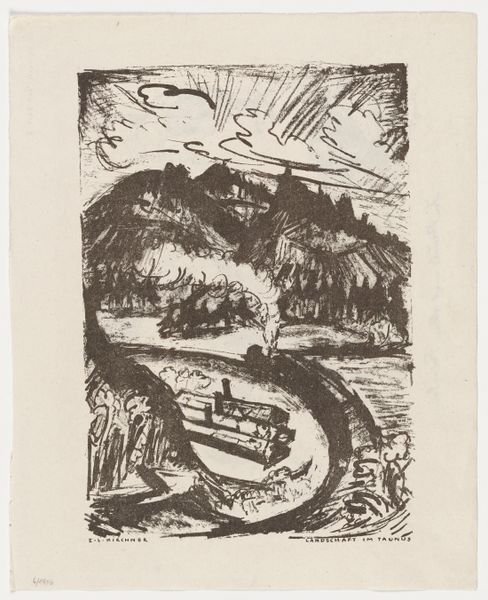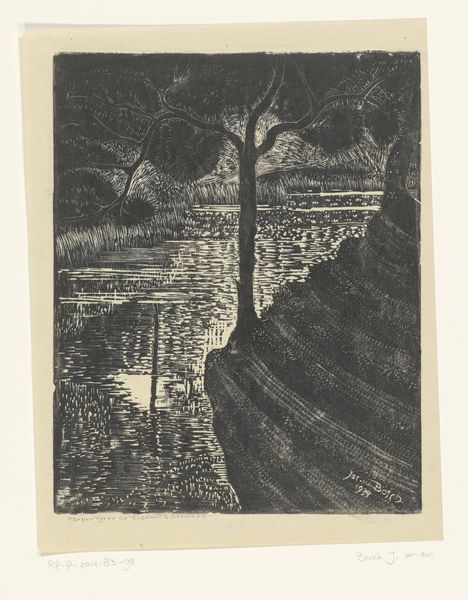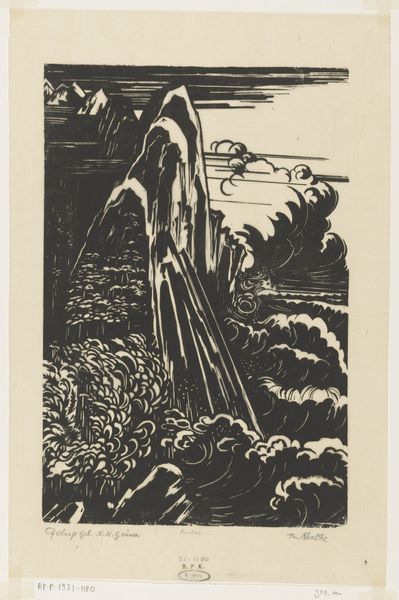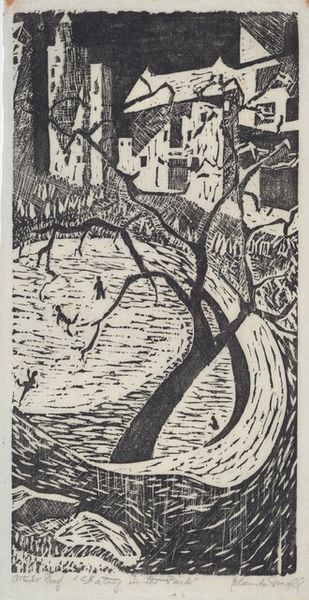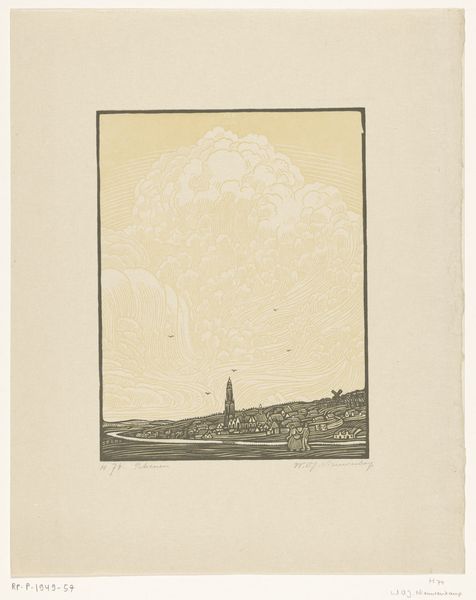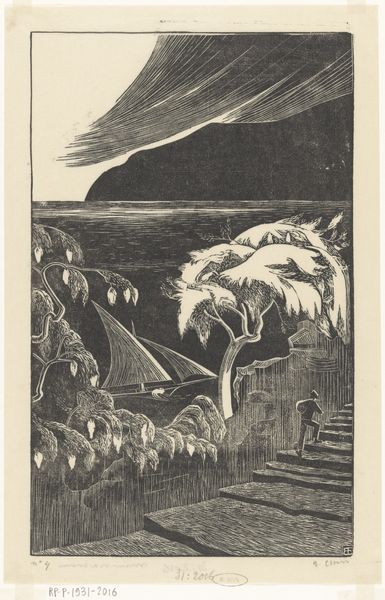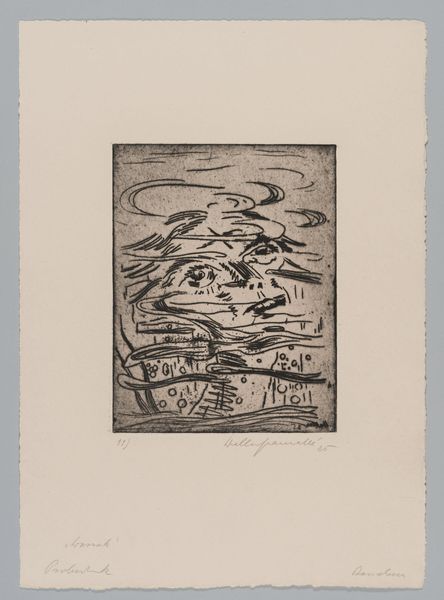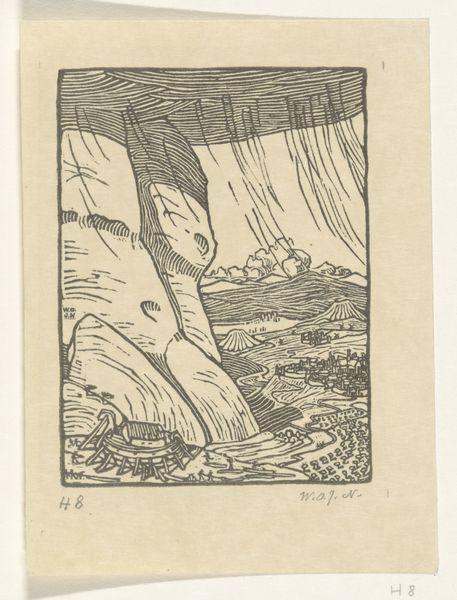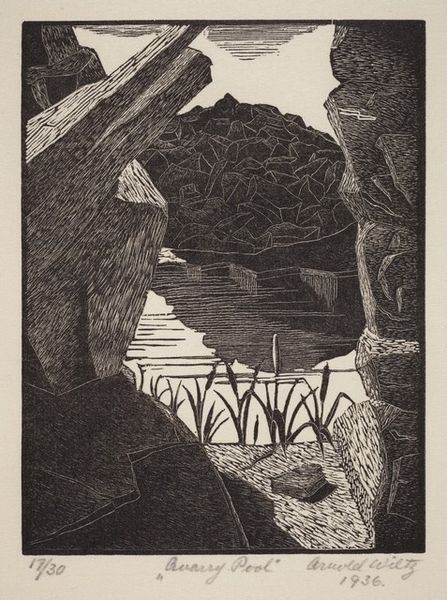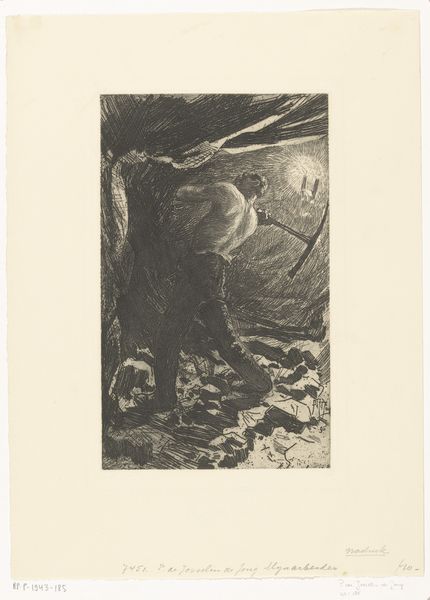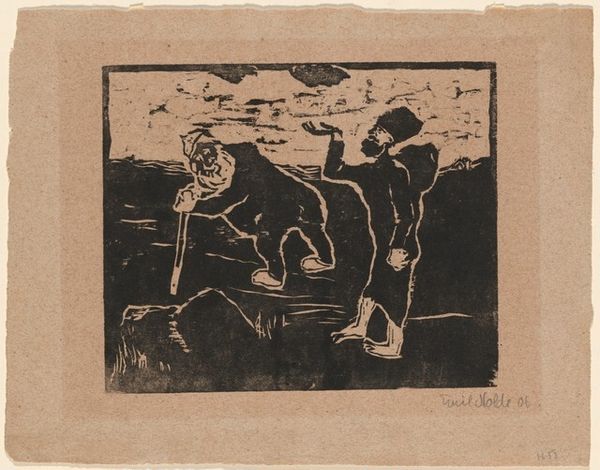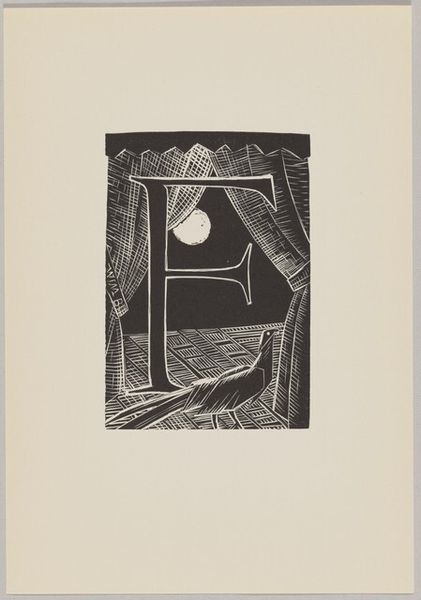
print, woodcut
# print
#
landscape
#
german-expressionism
#
expressionism
#
woodcut
#
cityscape
Copyright: Public domain US
Editor: This is Erich Heckel’s "Curving Canal," a woodcut from 1915. I'm struck by how the sharp, angular lines create this unsettling atmosphere, even in a landscape. What symbols do you see playing out here? Curator: Notice how the black sun looms—a disc of obscured light, almost oppressive. Does it feel like the promise of dawn, or the dread of nightfall made permanent? It speaks to the era, wouldn't you say? The rising anxieties and social turbulence reflected in distorted reality, the simplification into the starkest of contrasts. The "canal" itself, the watercourse as symbolic artery—what flows through this city, would you say, lifeblood or poison? Editor: Poison, maybe? Those dark buildings crammed together feel so claustrophobic. And what about the two little boats? Are they hope, or just… trapped? Curator: Observe how the "hope" takes the form of a child’s simple drawing. These shapes carry emotional weight despite their simplification. Consider: Is this vulnerability, naiveté, and potential for being overwhelmed significant? Editor: Definitely! So it’s not just a picture of a canal; it’s about all of this collective unease being concentrated into one image. I guess I thought landscapes were just supposed to be pretty. Curator: Indeed! German Expressionism offers more than just the picturesque. What happens when memory and premonition collapse into a single frame? Landscapes can be fever dreams. We remember, through such stark visions, that places hold history. And history, whether promise or omen, permeates a people. Editor: It's much more than just a cityscape, isn't it? It is an omen, a dark reflection. Thanks for pointing that out! Curator: The pleasure's all mine. I learned a thing or two, myself!
Comments
No comments
Be the first to comment and join the conversation on the ultimate creative platform.
